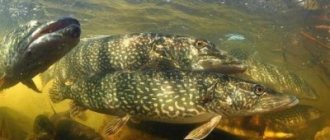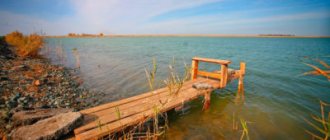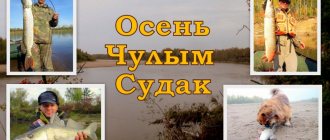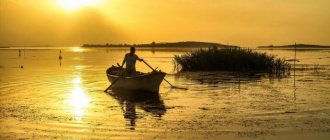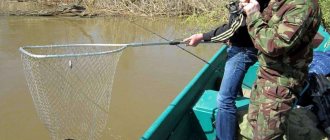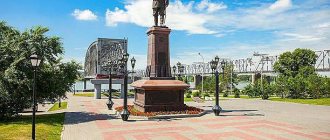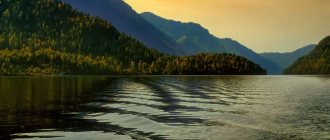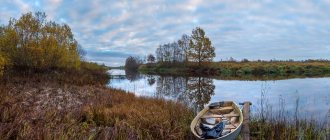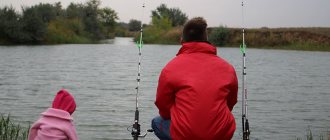The Novosibirsk region is very rich in forests, rivers and lakes. Beautiful forests attract people from neighboring regions for excellent hunting, berry and mushroom picking. And rivers and lakes delight local and visiting people with wonderful fishing.
Western Siberia is famous for fishing, including Novosibirsk. Here, in almost every body of water you can find large crucian carp, even in the smallest puddle. Fans of feeder, float and spinning fishing will have plenty to do in the region.
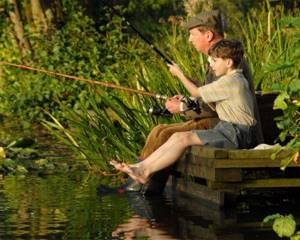
What kind of fish is found in the Novosibirsk region
Classic fish species fill local reservoirs; one might even say that they are overflowing with them. Well, especially lucky and experienced fishermen manage to catch rare fish. The main species inhabiting the waters of the Novosibirsk region:
- Carp;
- crucian carp;
- Catfish;
- Bream;
- Podleschik;
- Guster;
- Pike;
- Perch;
- Rotan;
- Ruff;
- Gudgeon.
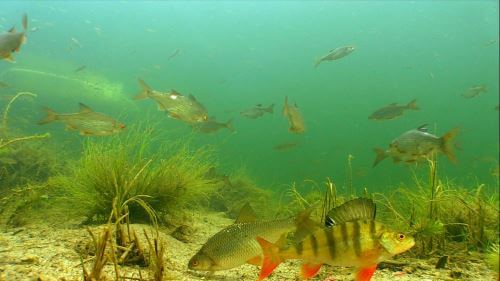
As you can see, in local reservoirs you can find different fish, so fishing will definitely appeal to both novice floaters and experienced fans of feeder and bottom fishing. Well, there will also be something for predator hunting enthusiasts to do.
Map of fishing spots
The most popular place among lovers of fishing with a float rod is Lake Kruglinskoe. Summer fishing here is simply excellent; large crucian carp and medium-sized rotan are often bitten. And at other times of the year the bite is also excellent. The depth of the reservoir does not exceed 2 meters.
The Ob River flows throughout almost the entire territory of the region. But only one place is marked on the map, not far from Novosibirsk. There are a lot of predatory fish in this place. If you throw closer to the bushes near the wall, you can catch a pike and the likelihood that a perch will bite is also very high. The most effective fishing time is May-July.
In the Dzerzhinsky district there is Lake Dzerzhinets, which is famous for its record catches of crucian carp. There really are a lot of large crucian carp in the reservoir. They catch it with a float rod from a boat, and from the shore they fish with feeder and bottom gear.
Not far from the Gusinobrodskoe highway there is a small lake that few fishermen know about. But there are a lot of large perch in it. They most often fish with spinning rods. True, if there is one drawback - a large number of hooks on the bottom. True, there are fish weighing about 1.5 kilograms.
Not far from Zelenodolinskaya Street there is a small lake. It, like the previous one, is little known in fishing circles. But there is fish in it. Sometimes you come across quite large specimens of crucian carp and minnow. The main thing is to choose the right gear and bait.
The Narnian puddle is the name given to a small body of water in the Razdolnoye area. There are a lot of small crucian carp, large fish are caught, but rarely. There is also a sufficient amount of gudgeon, but I think hardly anyone will catch it.
Review of reservoirs
With some experience and quality gear, fish can be caught in almost any body of water. There are also catchy spots where even a novice fisherman will have a blast. Let's list the most popular ones, where news from reservoirs constantly comes from:
- Dzerzhinets is a lake in the Dzerzhinsky district with a large population of crucian carp. There are no predators here, so the fish reproduce quickly and grow to a reasonable size. It is for crucian carp that people come here from all over the area. It is better to fish from a boat, and if there is no watercraft, then you will need long-casting gear (for example, a feeder). Mainly only rotan bites under the shore.
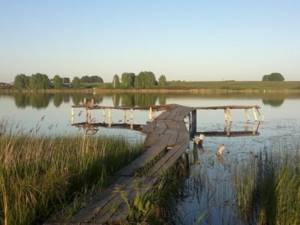
Krugloye is a vast lake near the village of Linevo. The water level in it is maintained solely by precipitation; there are no inflowing rivers, but this does not in the least prevent such fastidious river species as carp, bream, bream, roach and bleak from feeling comfortable. You can catch perch and pike with a spinning rod; you can catch trophy tench with a float.- Berdsky Bay is a bay of the Berd River, formed together with the Novosibirsk reservoir after the construction of a hydroelectric power station. The comfortable, gently sloping banks of this artificial reservoir beckon fishermen. The maximum depth is 18 meters, but you won’t be able to reach it from the shore. To catch large bream or ide that live in these waters, you will have to use a watercraft.
- Yarkul is a picturesque lake located 30 kilometers from the city of Kupino. Pheasants calmly roam on its banks, and swans gracefully glide along the water surface. But fishermen come here for something else, although, of course, admiring the natural beauty never interferes with fishing. You can catch crucian carp, roach, perch, bream and other fish. In winter, fishing is prohibited, and in the warm season, restrictions apply: only from the shore, with float or bottom tackle, no more than two hooks. Despite this, fishing on the lake is an interesting and productive activity. No one is left without a catch.
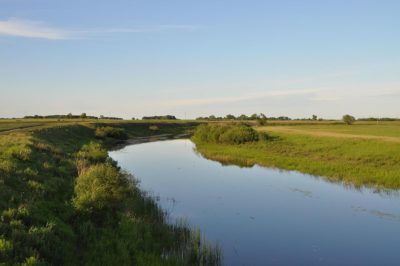
The Chulym River is a right tributary of the Ob, flowing through several districts of the Novosibirsk region. The most popular among the fishing fraternity are areas with steep banks, where you can catch catfish, trophy pike, carp, bream, ide and other large fish.- The Berd River is a waterway with gentle banks. Since promising depths are far from the coastline, it is better to fish here in summer with long-range gear or from a boat. In winter there are no problems, all fishing spots are accessible. They mainly catch bream and roach; spinners hunt perch and pike. In the cold season, burbot takes well.
- The Kargat River is a tributary of the Chulym, famous for crucian carp fishing. There are so many crucian carp in this river that they always bite, regardless of the time of year, weather conditions and other factors. As a pleasant bonus, a carp weighing 3.4 or even 5 kg may end up on the hook and then in the cage.
Free fishing spots in the Novosibirsk region
In the area of Krasnovodskaya Street there is a small pond that is densely populated with crucian carp. Most often small fish are caught, but there are cases of catching trophy specimens. It is best to fish with a float rod and use dough as bait.
The lake near SNT Vodnik pleases fishermen with a large number of perch. They catch it on a spinning rod, using small oscillating spoons as bait. Local fishermen claim that carp are often caught on the top of the tree. But this information still needs to be verified.
The lake, which, due to its appearance, received the name Ochki, at least local fishermen do not call it anything else, pleases fishermen with large catches of small crucian carp. The bait is standard: worm, dough, semolina, and the tackle is a classic float rod.

Kamenka River
The Kamenka River is a body of water known to all fishing enthusiasts. On both sides of the bridge, crucian carp are caught on it using feeder gear. Fishermen with a boat can catch perch. Well, very often you come across large rotan and gudgeon. The surprising thing is that all the fish bite on the worm.
Behind Kamenka there is a large quarry in which small crucian carp are often caught. Although the fish is not large, its quantity pleases the fishermen. They fish with everything from a float rod to feeder rods.
Fishing in the reservoirs of the Novosibirsk region
Ob Reservoir
The reservoir is artificial, created in 1957...59 on the Ob River during the launch of the Novosibirsk hydroelectric power station. Part of it is located in the Novosibirsk region, part in the Altai Territory.
The area of the reservoir is 1070 sq. km, it stretches 200 km in length. It has a greatest depth of 25 m and a maximum width of 22 km. In winter, it is completely covered with ice.
There are a lot of fish in the reservoir, as well as in the Ob itself. You can hunt pike perch, pike, and perch in it. Whitefish lovers will always have a catch of dace, roach, ide, bream, tench, crucian carp, and carp. There are valuable species of fish in the reservoir: from the salmon family (grayling, whitefish, peled, dace, muksun, whitefish); from the sturgeon family (sturgeon, sterlet). In cold weather, burbot can be caught well. Some fish, especially valuable ones, are prohibited from fishing without special permits and are listed in the regional Red Book.
Fish are caught in the Ob Reservoir all year round. In summer this can be done from the shore, but a more effective way is from a boat. The latter is explained by severe swamping of the territory adjacent to the reservoir and a small amount of shoreline along which you can freely approach the water.
Predatory fish in the reservoir are caught mainly with spinning rods. The large depths and expanses of the reservoir, the opportunity to catch trophy specimens, require the use of powerful rods and reels, and large baits. The latest in use are spinners and deep-sea wobblers. For perch, spinners are used. In a coastal strip overgrown with aquatic vegetation, where the depth is insignificant and there is no opportunity to “comb” the bottom layers, surface baits, in particular poppers, are suitable.
Lately, trolling has been developing in the reservoir. At the same time, some of the fishermen use boats equipped with holders for spinning rods and echo sounders. The rods used are special ones - trolling. Heavy and large spoons and wobblers, capable of diving to 7...9 m when moving, are used as bait.
White fish are caught with float gear and donks. The first ones are often match fishing rods, which are used to fish large areas from one point. If they purposefully catch crucian carp, they go out to catch it with fly rods equipped with sensitive floats, a small weight and hooks, and a relatively thin line.
During periods of good bream biting, people swim out to hunt for it, mainly with bottom gear. The latter are usually mounted on spinning rods, have feeders instead of sinkers and up to two short leashes. They catch fish using pearl barley, worms, and maggots. Sandwiches with the indicated baits are more preferable for bream.
Among the peculiarities of bream hunting: when casting donks for bream, fishermen almost always equip one of them for the predator, turning it into live bait gear. In addition to bream, such fishing often brings decent pike perch, bream, and burbot as prey.
Belle is looked for closer to the shores of the reservoir, in its bays, mouths, and streams flowing into it. They usually fish within the existing holes, on the underwater edges. They go to catch pike perch closer to the river fairway, on the deep-water edges there. There, and in the pits, they hunt for pike and large perch. Grass pike and smaller perches can be found at the edges of thickets of grass, reeds, and sedges.
In winter, the popularity of the Novosibirsk reservoir is very high. Sometimes even more fishermen go out on the ice than in open water in summer. They catch more roach and perch with jig tackle. They hunt with vertical lures for pike and pike perch. They bet on these same predators.
There is good fishing for burbot from the ice on the pond. This predator becomes active in cold weather and bites very actively. They catch it on baits, girders, using live bait, pieces of fish, and capes as bait. The peculiarity of fishing is that the weight and bait are placed on the bottom and, usually, overnight. In the morning they check the gear and remove the prey.
Berdsky Bay
This is a bay of the Ob Reservoir, formed when it was filled on the site of the lower reaches of the Berd River. It is the largest of those available on the reservoir, elongated in plan, the water flow in it is not strong.
Berdsky Bay stretches for 30 km in length and has a maximum width of 1.5 km. Its depth varies, off the coast it is 1...1.5 m, there are deep places 20 m deep. The bottom of the bay is muddy.
The shore on the right side of the bay is high, pine forests grow on it, cut by numerous ravines. On the left side the bank is more open and gently slopes down to the water. It is almost entirely plowed and has good recreational areas with sandy beaches.
There are a lot of fish in the bay, and all kinds of fish present in the reservoir. For fishermen, due to existing restrictions and bans on catching valuable species of fish, pike perch, perch, pike, roach, ide, and bream are of interest.
You can fish from the shore, but larger specimens are more often caught when hunting from a boat. The most common gear among fishermen is float rods and donks. For predators, of course, there are spinning rods, rigs, and girders.
Ban
It is prohibited to extract (catch) aquatic biological resources during periods and in water bodies of fishery importance and their parts, with the exception of the extraction (catch) of aquatic biological resources from the shore (without the use of watercraft) with one bottom or float fishing rod, spinning rod, feeder with a total number of hooks of no more than 2 pieces on mining (catch) gear for one citizen and with a total of no more than 5 pieces for one citizen:
- all types of aquatic biological resources: from April 20 to May 20 - in the Ob River with all tributaries, branches, quarrels, channels and hollow lakes, as well as tributaries of the Irtysh River, and on the territory of the Suzunsky district - from the beginning of the melting of ice (beginning of ice drift) to 20 May;
- from April 25 to June 10 - in the Novosibirsk reservoir;
- from April 25 to May 25 - in closed lakes with rivers flowing into them;
- from June 11 to June 30 - twin and bottom trawls in the Novosibirsk reservoir in the area 530 - 550 km according to the pilot map;
- from May 25 to September 30 - twin trawls in lakes Malye Chany, Uryum, Sargul, Kozhurla and Koltoyachka channels (Lake Chany basin);
- from May 20 to June 15 in the Ob River from the mouth of the lower approach canal of the Novosibirsk Hydroelectric Power Station to the village of M. Krivoshchekovo (685 - 691 km from the mouth according to the pilot map);
- from May 20 to June 15 - in the Ob River near the settlement of Pochta (760 - 770 km from the mouth according to the pilot map);
- from May 20 to June 15 - in the Ob River near the settlement of Beloyarka (777 - 788 km from the mouth according to the pilot map);
- from May 20 to June 15 - in the Ob River near the settlement of Tashara (800 - 806 km from the mouth according to the pilot map);
- from May 20 to June 15 - in the Ob River near the village of Vyatsky Kameshek (816 - 820 km from the mouth according to the pilot map);
- from melting ice to June 30 - sterlet in the Novosibirsk reservoir.
